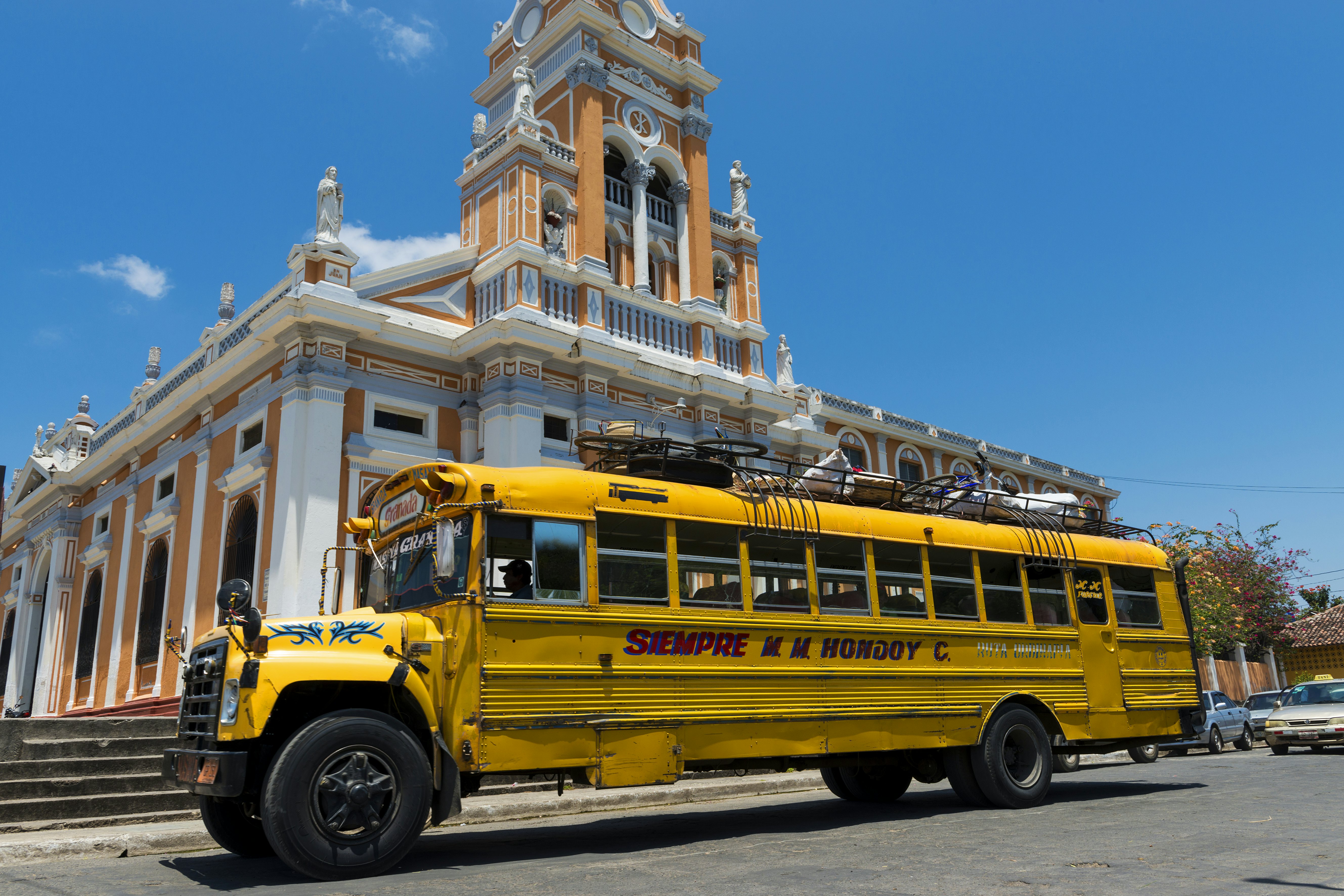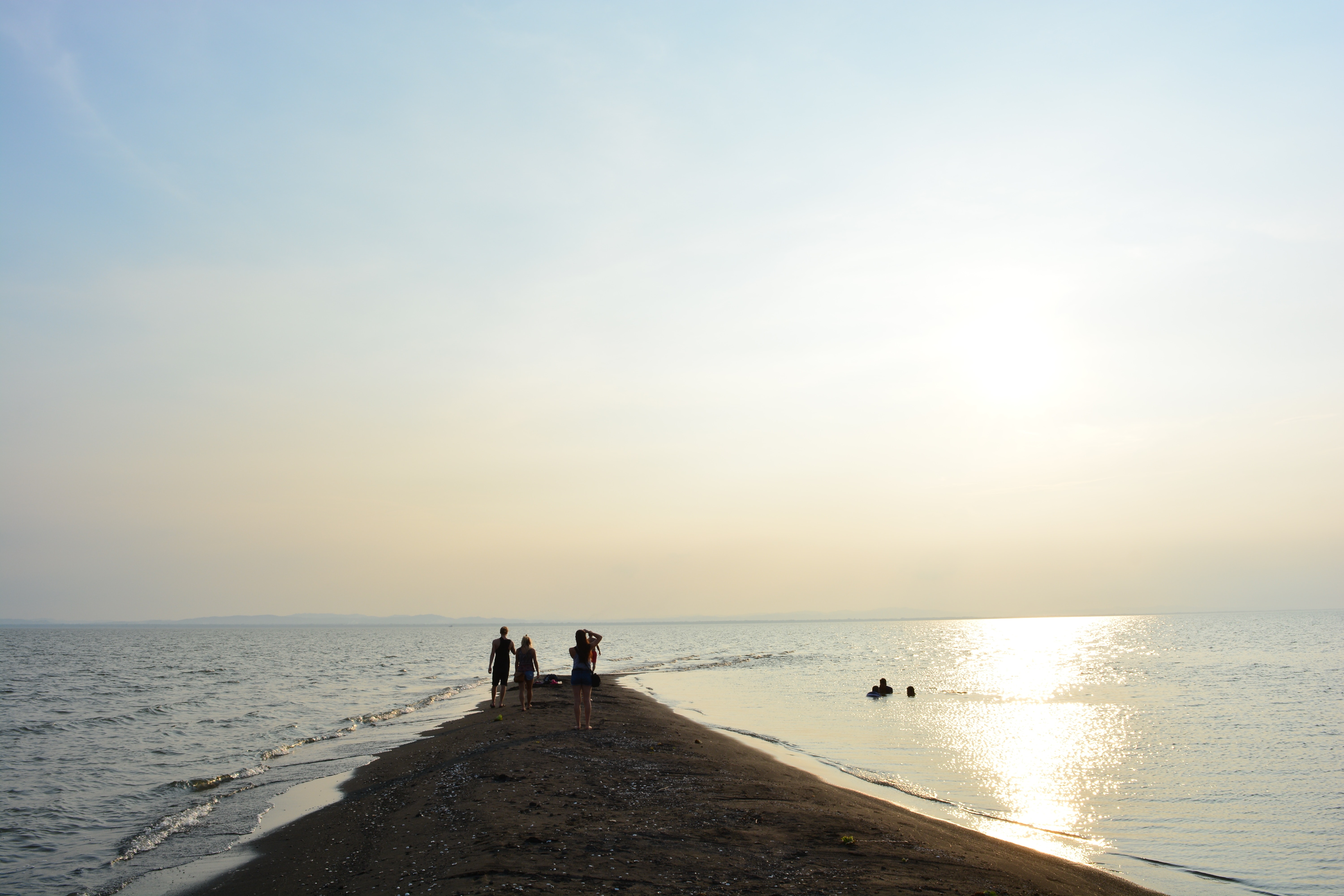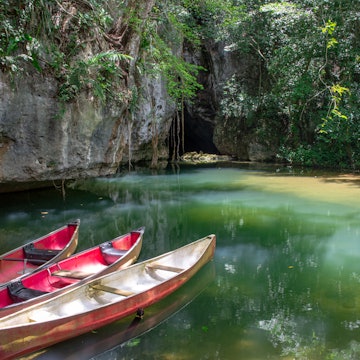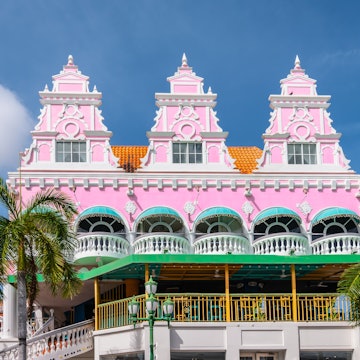

Nicaragua has retained its off-the-beaten-path feel. Michael George for Lonely Planet
The largest country in Central America - dubbed the land of lakes and volcanoes - Nicaragua has retained its off-the-beaten-path feel, and much of it has been preserved rather than developed.
Whether you want to feast on gourmet local produce, taste top-notch rum, wake up and smell the organic coffee surrounded by Spanish-colonial architecture, lounge on idyllic white-sand beaches beneath swaying palms, clamber over – and surf down – active volcanoes, ride some big waves or go monkey-spotting in lush forests, Nicaragua has something for you.
When should you go to Nicaragua? As soon as possible...

When should I go to Nicaragua?
Subtropical Nicaragua is a year-round destination with two distinct seasons: hot and dry from November to May and hot and wet from June to October, aka the "green season." The rains usually come in short, sharp bursts in the late afternoon, with plenty of sunshine the rest of the time; September and October are the wettest months.
Nicaragua is at its most popular (and most expensive) over Christmas, New Year and Easter, when towns and cities hold colorful religious festivals and Nicaraguans flock to the beaches.

Is it easy to get to and around Nicaragua?
Nicaragua’s international airport is Augusto C. Sandino in Managua, and there are direct flights from Miami and Fort Lauderdale in the US, Mexico City and Panama City, and plenty of connecting flights.
If you’re traveling around Central America by bus, Transnica covers Costa Rica, Honduras, and Nicaragua, while Transporte del Sol operates in Guatemala, El Salvador, Costa Rica and Nicaragua.
You can also get around the country on local buses, whether "chicken buses" – reinvented North American school buses that rattle along at breakneck speed – or good-value long-distance coaches that are reasonably comfortable.
La Costeña offers daily flights from Managua to Great Corn Island and ferries cross Lake Nicaragua to Isla de Ometepe and the Solentiname archipelago. Explore the historic centers of Granada and León on foot, but taxis are cheap and plentiful if you want to go further afield.
How long do I need in Nicaragua?
In a week, most visitors skip Managua and head straight to colonial-era Granada, on the shores of Lake Nicaragua. After you’ve explored the city, its lakes and volcanoes, take a puddle jumper to the Corn Islands, bus it to the beaches of San Juan del Sur, chill on the volcanic isle of Ometepe, or surf down an active volcano in Léon.
In two or three weeks, you could cover all the above and add on a visit to the lush Solentiname islands and their primitivist artists, or take a jungle journey along the Río San Juan, the watery frontier with Costa Rica. And with more time, you could brush up your Spanish at one of the many wallet-friendly schools.

Top things to do in Nicaragua
1. Peer into a volcanic crater in Granada
Granada is one of Central America’s oldest and loveliest cities, all postcard-pretty plazas, ornate churches and cobbled streets lined with rainbow-colored houses, where locals drag their rocking chairs onto the streets to catch up with their neighbors.
But you’re never far from nature. Spend an evening peering into Masaya Volcano’s crater as luminous orange molten lava bubbles away below you, discover its string of volcanic isletas (islets) by kayak, hike through – or zipline above – Mombacho Volcano’s cloud forest, cool off in the crater lake of Laguna de Apoyo, and visit the skilled artisans of Masaya and the Pueblos Blancos.
2. Ride the Pacific rollers
Stellar waves and wild beaches line Nicaragua’s Pacific coast, and it’s long been a haunt of surfers in the know. To the south, laid-back San Juan del Sur is surf-and-party central – the Sunday Funday Pool Crawl is a backpacker legend. But the surfing is better out of town – Playa Maderas, 20 minutes north, has the best beach break, while mellow Playa Remanso, 15 minutes south, is perfect for novices.
In Popoyo, around 75km (47 miles) to the north, the surf breaks have the most consistent swells for wave riders of all levels, with rentals and surf schools aplenty.
3. Surf down an active volcano
Adrenaline junkies can climb up and whizz back down the black ash slopes of still-rumbling Cerro Negro volcano on a specially designed board, hitting speeds of up to 100kph.
Nicaragua’s youngest volcano is a short hop from Léon, the northern colonial-era capital that’s home to the larges cathedral in Central America.
Léon has the buzzy feel of a university city, with eclectic museums including the Museo Histórico de la Revolución, and art, from the contemporary Museo de Arte Fundación Ortiz-Gurdián to street murals.

4. Kick back in the Caribbean
Around 70km off Nicaragua’s east coast, the pocket-sized Corn Islands tick all the Caribbean boxes – palm-fringed, icing-sugar sand beaches, gin-clear water and a chilled-out vibe – without the hefty price tag.
Car-free Little Corn is a short flight from Managua followed by a bouncy 40-minute boat ride from Great Corn. Snorkel and scuba the pristine reefs, flop into a hammock for a front-row view of the sunset, then dine feet-in-the-sand on just-caught fish to a reggae soundtrack.
5. Enjoy volcanic island life
The twin-coned volcanic Isla de Ometepe rises out of the silver-flat surface of Lake Nicaragua, and both fertile, dormant Volcán Maderas and rocky, fiery Volcán Concepción make challenging climbs.
Less strenuous is the beautiful cloud forest hike to the San Ramón waterfall, wildlife-watching from a kayak along the green-fringed Istián River, howler-monkey spotting at Reserva Charco Verde and hikes to ancient petroglyphs. Or tour a community-owned coffee finca or a tree-to-bar chocolate farm before a feast of organic farm-to-fork fare at Café Campestre.
My favorite thing to do in Nicaragua
I love tucking into Nicaragua’s one-of-a-kind dishes. Nacatamales are flavorsome parcels of corn dough stuffed with marinated spicy pork or chicken, rice, chilies, olives and more, all wrapped in a banana leaf and steamed.
Granada’s favorite street food is vigorón, an energy-boosting combination of boiled cassava and crispy chicharrones (fried pork rinds), topped with a tangy cabbage salad.
The country’s bountiful tropical fruits, such as mangos, guanábana (soursop) and calala (passion fruit), appear in batidas (shakes), top-notch coffee is grown on fertile volcanic slopes, while Flor de Caña’s 12-year-old naturally aged rum is rated one of the world’s finest. And now artisan chocolate makers, such as Argencove in Granada, are turning the country’s cacao into award-winning chocolate bars.
How much money do I need for Nicaragua?
Nicaragua is one of the cheapest countries in Central America. There’s accommodation to suit all budgets, from hostels and family-run guesthouses to eco-friendly boutique hotels and luxe resorts. Buses are a bargain, and you can fill up on street food, eat in a comedor (local restaurant) or splurge on fine dining.
Hostel bed: from US$8
Budget hotel room for two: from US$27
Bus ticket: from US$1
Dinner for two in a mid-range restaurant: from US$25
Nicaraguan coffee: from US$2
Local beer: from US$1.30
Is Nicaragua safe to visit?
Statistically, Nicaragua is the safest country in Central America after Costa Rica. Just take the same precautions you would at home. Don’t flash your cash or valuables in public places, and avoid isolated and dimly lit areas at night, especially if you’re alone – ask a local for advice on unsafe neighborhoods.
Order a radio taxi where possible, and if you rent a car don’t leave any valuables in it overnight. If you come across a demonstration, leave the area.
Editor's note: This article was sponsored by Nicaragua Tourism after the city was selected for Lonely Planet's Best in Travel 2024. Sponsors do not influence a destination's inclusion in Best In Travel, which is determined solely by Lonely Planet's editorial team.
Supported by Nicaragua Tourism
As a travel entertainment and inspirational media outlet, we sometimes incorporate brand sponsors into our efforts. This activity is clearly labeled across our platforms.
Funding for this story is provided by Nicaragua Tourism. All editorial views are those of Lonely Planet alone and reflect our policy of editorial independence and impartiality.
With sponsored content, both Lonely Planet and our brand partners have specific responsibilities:
-
Brand partner
Only provides financial support and their logo. Doesn't make revisions or approve the story.
-
Lonely Planet
We fully control the creative and editorial approach, just like any other featured story.














